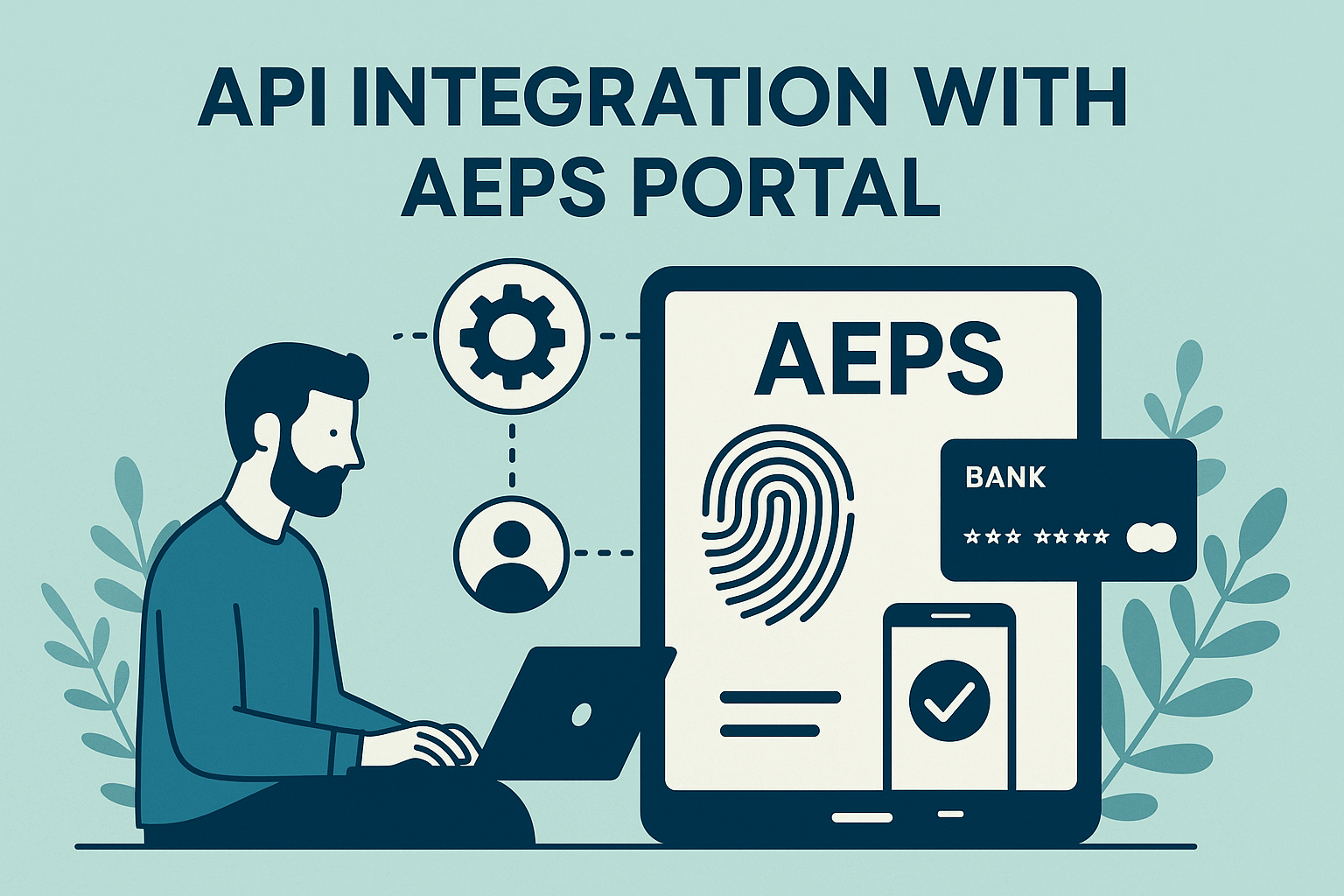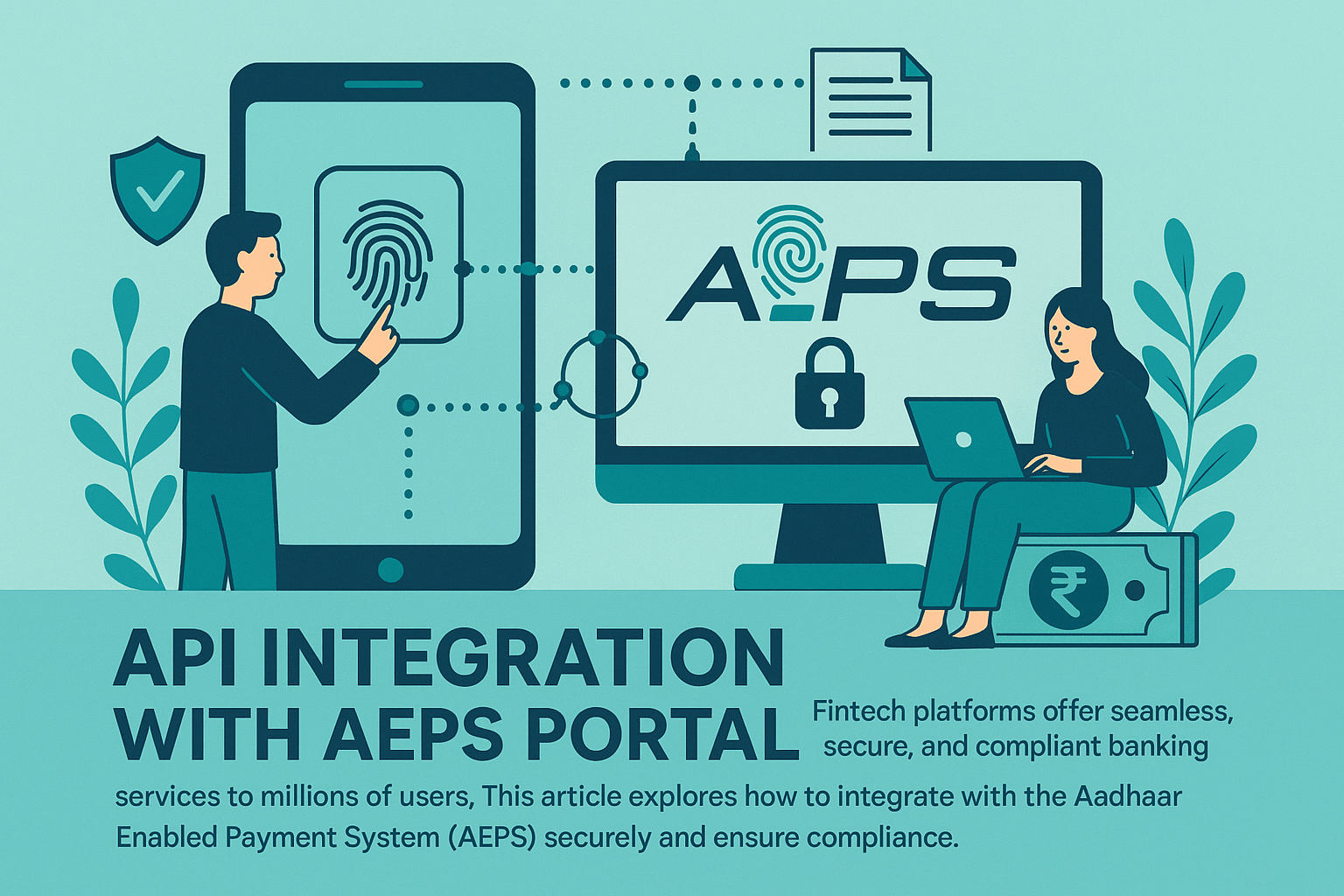API integration with AEPS portal is revolutionizing how fintech platforms offer seamless, secure, and compliant banking services to millions of users. As digital financial services grow, ensuring secure transactions while adhering to regulatory standards is critical. This article explores how fintech companies can integrate with the Aadhaar Enabled Payment System (AEPS) securely, the challenges they may face, and best practices to ensure compliance.
Understanding AEPS and Its Importance
The Aadhaar Enabled Payment System (AEPS) is a bank-led model that allows customers to perform basic banking transactions using their Aadhaar number and biometric authentication. It eliminates the need for physical cards, PINs, or signatures, making financial services accessible even in remote areas.
Key Transactions Supported by AEPS:
-
Cash deposits & withdrawals
-
Balance inquiries
-
Fund transfers (Aadhaar-to-Aadhaar)
-
Mini statements
With over 1.3 billion Aadhaar cardholders in India, AEPS has become a game-changer for financial inclusion. Fintech platforms integrating with AEPS can tap into this vast user base, offering frictionless banking solutions.
Why API Integration with AEPS Portal Matters
For fintech companies, API integration with AEPS portal provides:
-
Wider Reach – Serve unbanked and underbanked populations.
-
Lower Costs – Reduce dependency on physical banking infrastructure.
-
Enhanced Security – Biometric authentication minimizes fraud risks.
-
Regulatory Compliance – Aligns with RBI and NPCI guidelines.
However, integrating with AEPS requires strict adherence to security protocols and compliance standards.

Steps for Secure API Integration with AEPS Portal
1. Obtain Necessary Approvals & Licenses
Before integration, fintech platforms must:
-
Register with the National Payments Corporation of India (NPCI).
-
Partner with a bank or Payment Service Provider (PSP) that supports AEPS.
-
Ensure compliance with RBI’s KYC and data protection norms.
2. Choose the Right API Provider
Several third-party API providers facilitate AEPS integration, including:
-
PayNearby
-
Razorpay
-
Cashfree
-
NSDL
Evaluate providers based on:
-
Uptime & reliability
-
Security certifications (ISO 27001, PCI-DSS)
-
Pricing & scalability
3. Implement Strong Authentication Mechanisms
Since AEPS relies on biometric verification, ensure:
-
End-to-end encryption for data transmission.
-
Secure storage of Aadhaar details (as per UIDAI guidelines).
-
Fraud detection systems to flag suspicious transactions.
4. Ensure Compliance with UIDAI & RBI Regulations
-
Data Localization – Store Aadhaar data only in India.
-
Consent-Based Authentication – Users must authorize transactions.
-
Audit Trails – Maintain logs for regulatory audits.
5. Test Thoroughly Before Going Live
-
Conduct sandbox testing to simulate real transactions.
-
Perform penetration testing to identify security vulnerabilities.
-
Ensure seamless UX across different devices and networks.

Challenges in AEPS API Integration
While API integration with AEPS portal offers immense benefits, fintech platforms may face:
-
Biometric Failures – Poor fingerprint scans can lead to transaction rejections.
-
Network Issues – Rural areas may have connectivity problems.
-
Regulatory Changes – Frequent updates in NPCI/RBI policies require constant adaptation.
Case Study: How a Leading Fintech Platform Solved AEPS Integration Challenges
A digital payments startup integrated AEPS but faced high transaction failures due to biometric mismatches. By implementing AI-based fingerprint enhancement algorithms, they improved success rates by 35%.
Best Practices for a Smooth AEPS Integration
-
Use Tokenization – Replace Aadhaar numbers with tokens to enhance security.
-
Multi-Factor Authentication (MFA) – Add OTP alongside biometrics for high-value transactions.
-
Real-Time Monitoring – Detect and block fraudulent transactions instantly.
-
Regular Compliance Audits – Stay updated with changing regulations.
Future of AEPS in Fintech
With India’s digital economy booming, AEPS will continue to play a crucial role in financial inclusion. Innovations like voice-based authentication and offline AEPS transactions could further expand its reach.
Conclusion
API integration with AEPS portal empowers fintech platforms to offer secure, inclusive, and compliant banking services. By following best practices in security, authentication, and regulatory adherence, businesses can unlock new opportunities while safeguarding user data.
For fintech startups and established players alike, AEPS integration is not just an option—it’s a necessity in the evolving digital finance landscape.
Frequently Asked Questions (FAQs)
Q1. What is AEPS API integration?
AEPS API integration allows fintech platforms to connect with the Aadhaar Enabled Payment System, enabling biometric-based banking transactions.
Q2. Is AEPS secure for digital transactions?
Yes, AEPS uses Aadhaar-based biometric authentication, making it highly secure compared to traditional methods.
Q3. Do I need a banking partner for AEPS integration?
Yes, fintech companies must partner with an NPCI-approved bank or PSP to access AEPS services.
Q4. Can AEPS work without internet?
Currently, AEPS requires internet connectivity, but offline AEPS solutions are under development.
Q5. What are the costs involved in AEPS API integration?
Costs vary based on the API provider, transaction volume, and additional security features.
Disclaimer: This post is for educational purposes only. If you have any concerns regarding this content, please visit our DMCA page for removal requests. Verify ownership or issues related to this post before taking any action.
